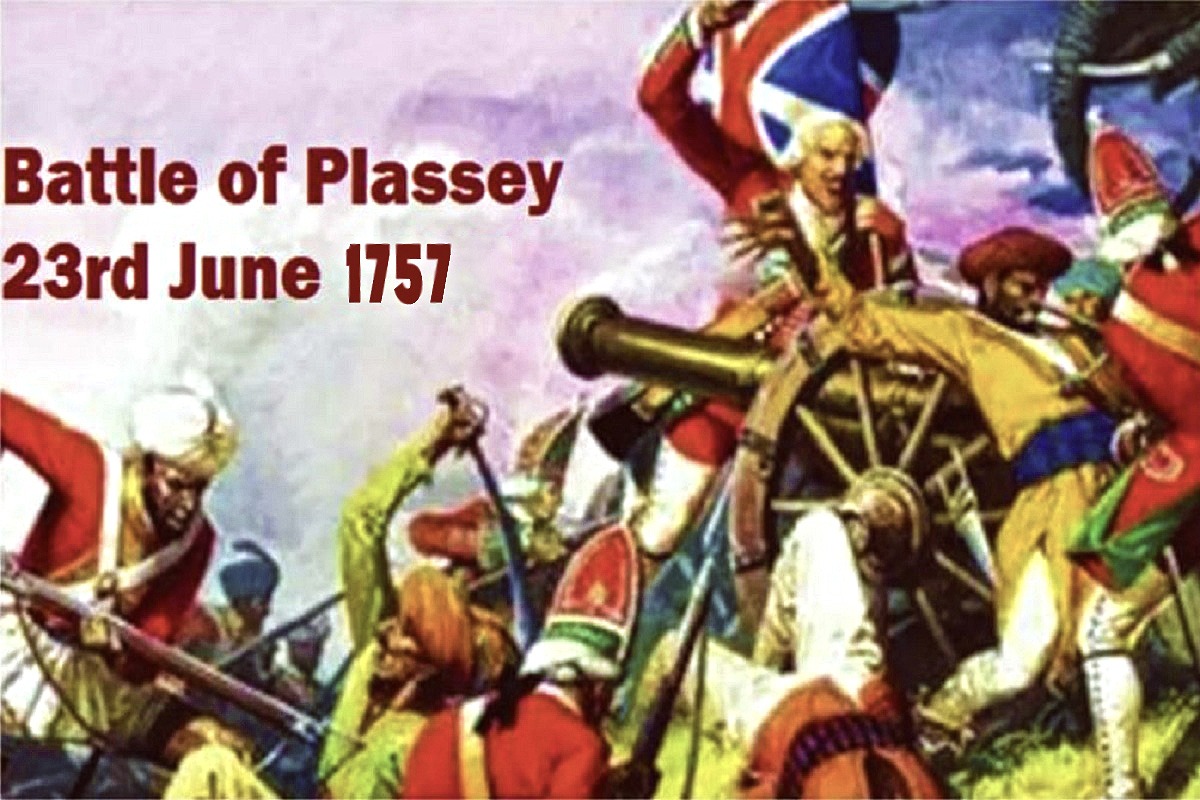When it comes to history and paying homage to martyrs and heroes, today’s leaders rarely forge deep connections with our historic past.
When West Bengal chief minister Mamata Banerjee, on 4 December 2022, said “that fight in me lives on”, she was referring to the 26-day hunger strike she had begun 16 years ago in Singur in Hooghly district. “It was my moral duty to fight for those who were left helpless due to the greed of the powerful,” she also tweeted.
Advertisement
While Mamata Banerjee’s strike and its ramifications were undoubtedly historic, and transformed the political landscape of our country, the Trinamul Congress supremo could have utilized the opportunity to reaffirm the centuries-old battles waged by the powerless versus the powerful in the districts of Bengal.
Her starting point could have been 1757, a full century before 1857 hailed as our ‘first war of independence’. After the farce of the Battle of Plassey, the British East India Company and its officials began a comprehensive conquest of the land. They forcibly took away commodities from peasants and merchants, either not paying the price or paying just a fraction.
Records reveal that the Company’s Indian agents behaved as if they were the landholders or proprietors. It was brutal commercial exploitation, upending age-old social relations.
In short, a plunder incomparable. Modern-day chroniclers and historians refer to it as the ‘anarchy’, conjuring up dark chaotic imagery with the downfall of monarchy.
From 1760 onwards, there are records of resistance struggles against ruthless exploitation under the East India Company. It was ordinary people who came forward to fight, struggling as they were for survival. Among the poorest, and the poorer working people ~ be they tribals, peasants, remnants of indigenous troops ~ the discontent burst into outright rebellion.
Their leaders were drawn from the old nawabi and zamindari class who had the fight still left in them. Even Mir Kasim, the Nawab of Bengal, was forthright in writing to East India officials, highlighting the misery of peasants and merchants being deprived of their goods.
Quite naturally, the English did not heed Mir Kasim’s protest. And as a retort, in 1763 the Nawab promulgated a firman abolishing all internal trade duties in Bengal Subah ~ so that Indian merchants had an opportunity to compete on equal terms with British merchants. In today’s parlance this is ‘a levelplaying field’.
In 1764, it was on the battlefield that the warring parties met; and in Buxar, the troops of Mir Kasim, Shuja-ud-daulah, NawabWazir of Awadh and the fugitive Emperor of Delhi, Shah Alam II were defeated by the British.
The Awadh Nawab and Shah Alam II submitted. But Mir Kasim did not accept defeat. With his family he took refuge in Rohilkhand, now in Uttar Pradesh. As long as he lived, he continued to organize forces against the British. He has often been hailed as “a defeated but great fighter in India’s freedom struggle”.
The 1770s were a horrible decade for Bengal: famine took its toll on toiling masses, both Hindus and Muslims. Sure enough, there were widespread revolts all over north Bengal against the oppressive British rule and their revenue collecting agents.
These revolts were led by fakirs and sannyasis, ordinary men who were otherwise anonymous, seeking esoteric spiritual paths. Names of Majnu Shah and Bhabani Pathak are still remembered. Uprisings continued in North Bengal and parts of Central Bengal, believe it or not, for about three long, blooddrenched decades. In his memoirs Warren Hastings, the Governor General of Bengal, admitted that these rebels numbered “more than half a lakh, that more than one English officer lost his life, and several English companies were defeated in endeavouring to quell these insurgencies.”
It took the British at least a decade of burning villages and slaughtering the people before they could suppress the uprisings.
At about the same time, in 1783 and 1784 there was a widespread peasant uprising in Rangpur district of north Bengal. In the districts of Bankura and Midnapore, the Chuars revolted for about 30 years till 1799. Their revolt began in Dhalbhum in 1767. Its leader was the local chief’s nephew Jagannath Dhal (or Dhavaldeva).
The Company’s troops were led by Captain Morgan, and they were totally defeated trying to crush the uprising. In a secret letter to the Governor of Bengal, Harry Verelst, in Calcutta, the Captain wrote ‘practically the whole of Dhalbhum and the Jangle Mahals had been in revolt against British rule’.
The Chandrakona region of Midnapore was another centre of revolt, where the rebel leader was Gobardhan Dikpati (or hereditary village boundary guard).
Warren Hastings failed to quell the Chuar uprisings. The district administrator of Bankura wrote in his diary in 1787 that the Chuar revolt was so widespread and fierce that temporarily, the Company’s rule had vanished from the district of Bankura. Finally in 1799, Governor General Wellesley crushed these uprisings by a pincer attack.
An area near Salboni in Midnapore district is still known by local villagers as “the heath of the hanging upland”, Phansi Dangar Math. In this mango grove many rebels were hung from trees by the British.
Some years later under the leadership of Jagabandhu, the paymaster or Bakshi (of the infantry of the Puri Raja), there was the well-known widespread Paik or retainer uprising in Orissa.
In 1793 Governor General Cornwallis initiated in the entire Presidency of Bengal a new form of Permanent Settlement of revenue to loyal landlords. This added to the misfortunes of the toiling peasantry: in time they would protest against this as well.
The history of uprisings among the Bengal peasants and tribals is a gut-wrenching though glorious chapter in our antiBritish liberation movements; we need broader perspectives and horizons to pay homage to these freedom-fighters who battled for decades. The story of our freedom struggles is incomplete without them











